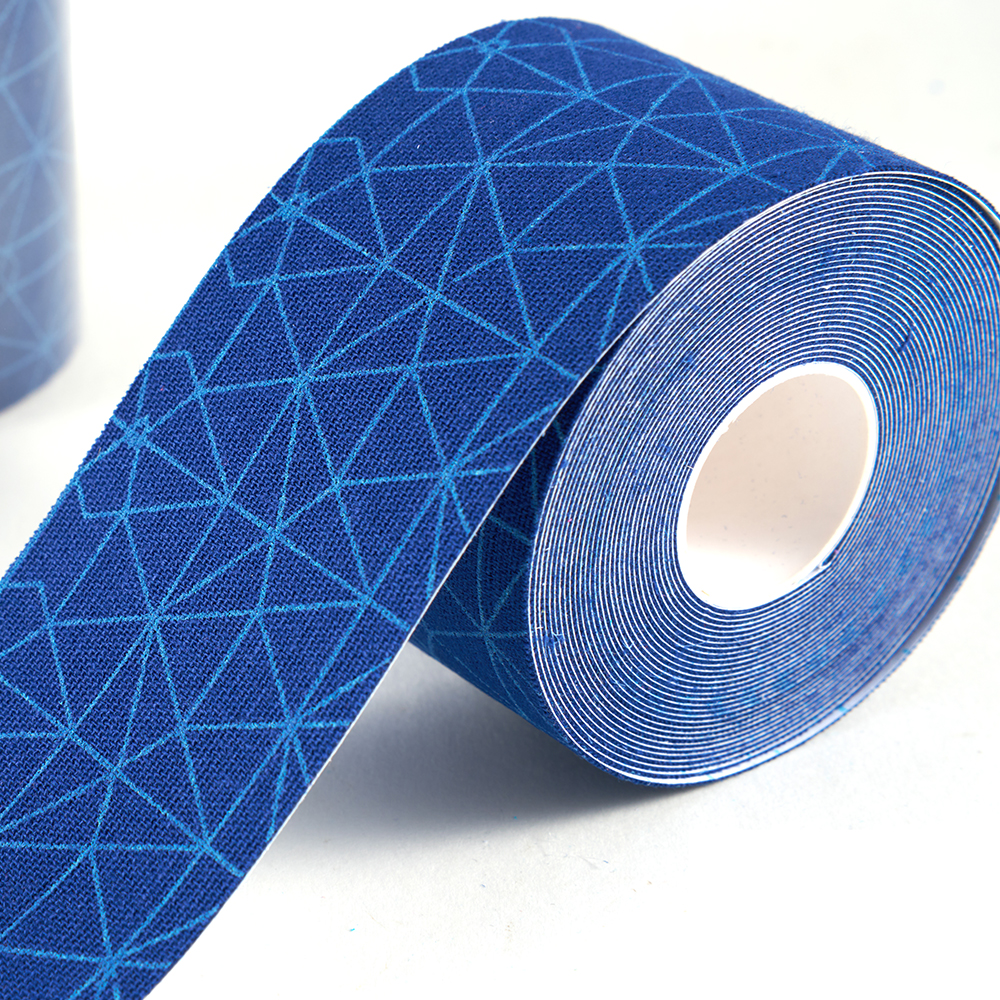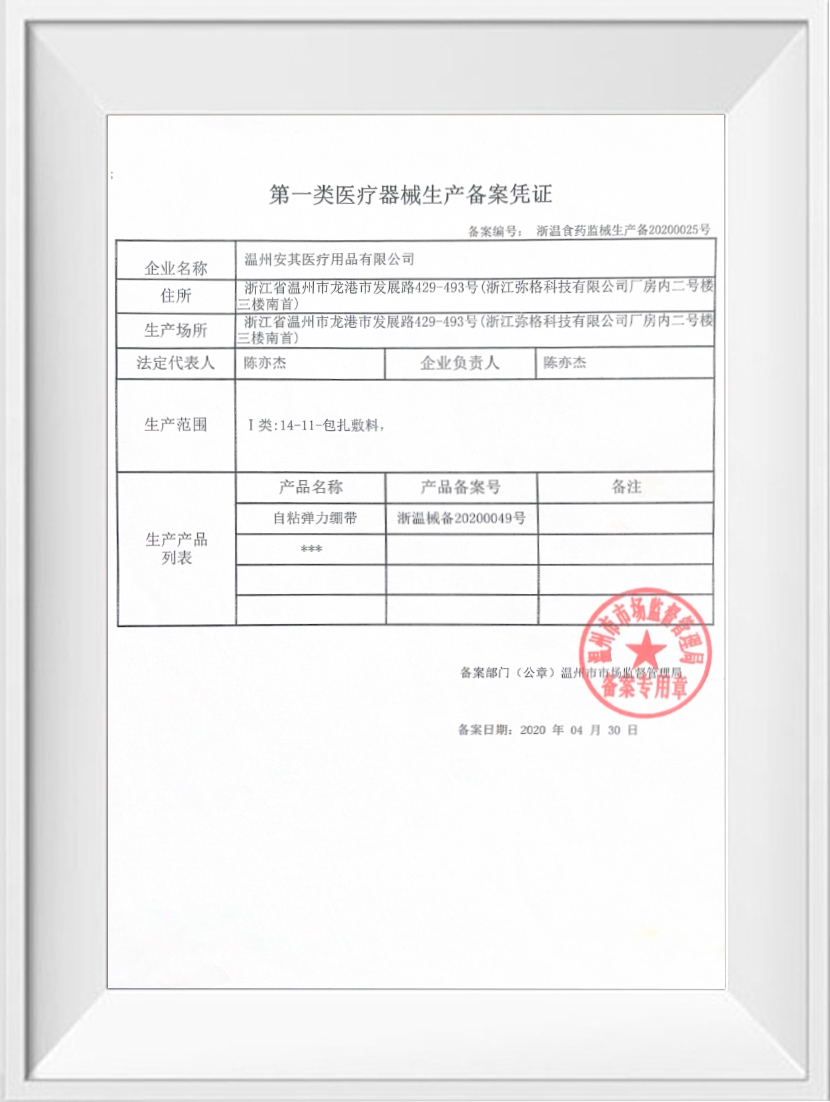Web Menu
Product Search
Exit Menu
We provide quality products and services to customers from all over the world.
Can kinesiology tape ankle stability help prevent ankle sprains?
Kinesiology tape, also known as k-tape, is a thin, stretchy cotton tape with an adhesive side that is used in various ways to support muscles and joints without restricting range of motion. It can be applied in several different patterns, each with a specific purpose.

When it comes to ankle stability, here are some potential benefits of kinesiology tape:
1. Support and Stability: Taping can provide additional support to the ankle joint, which may help prevent sprains by reducing excessive movement that can lead to injury.
2. Pain Relief: By lifting the skin, kinesiology tape can create a small space that allows for better blood flow and lymphatic drainage, which may help reduce pain and swelling.
3. Muscle Activation: Certain applications of kinesiology tape can stimulate muscle activity, which might improve the stability of the ankle by engaging the muscles that support it.
4. Recovery: Taping can also be used during the recovery phase after an injury to help manage pain and promote healing.
However, it's important to note that the effectiveness of kinesiology tape for preventing ankle sprains is not universally agreed upon in the scientific community. Some studies suggest that it can be beneficial, while others find no significant difference compared to a placebo or no treatment.
Kinesiology tape should be applied by a trained professional to ensure it is applied correctly and to maximize its potential benefits. It's also crucial to remember that kinesiology tape is not a substitute for proper footwear, warm-ups, and strength training, which are all important aspects of ankle injury prevention.
Chronic pain is a persistent condition that affects millions of individuals, often interfering with daily activities, work performance, and overall quality of life. While there are many methods available for managing chronic discomfort—including medication, physical therapy, and lifestyle adjustments—waterproof kinesiology sports tape has gained recognition as a practical, non-invasive tool to help relieve certain types of long-term pain.
Waterproof kinesiology tape is a flexible, breathable, and stretchable adhesive tape designed to mimic the elasticity of human skin. Its key function lies in its ability to lift the outer layer of the skin slightly, which creates space between the skin and the underlying tissues. This micro-lifting effect can facilitate improved lymphatic drainage and blood circulation, helping to reduce inflammation and pressure on pain receptors. For individuals suffering from conditions like arthritis, tendinitis, or postural strain, this mechanism may provide a mild yet consistent form of relief.
Moreover, the tactile stimulation provided by the tape enhances proprioception—the body's awareness of joint and muscle positioning. By improving neuromuscular feedback, kinesiology tape can gently guide users to maintain better posture or movement patterns, which over time may reduce stress on chronically painful areas.
Waterproof properties offer a unique advantage: the tape remains effective even during sweaty workouts, showers, or aquatic therapy sessions. This durability ensures that pain management support remains in place throughout various activities, without the need for frequent reapplication.
While kinesiology tape is not a cure for chronic pain, it can be a valuable part of a broader pain management strategy. It works better when used under the guidance of a healthcare provider or physical therapist who can apply it properly and recommend complementary interventions.
In recent years, medical tape has found a surprising niche beyond injury treatment—its application in skincare, particularly for managing facial wrinkles. While it may seem unconventional, some users and skincare professionals have turned to this simple, accessible solution as a supplementary method for promoting smoother skin and reinforcing healthy muscle habits during rest.
The concept behind using medical tape for wrinkles is rooted in the idea of mechanical support and muscle training. As we age, repetitive facial movements—such as frowning, squinting, or sleeping on one side—can contribute to the formation of fine lines and deeper wrinkles. When applied correctly, medical tape can help restrict certain facial muscle movements during rest or sleep, potentially the impact of these habitual expressions. This is especially relevant for areas like the forehead, between the eyebrows (glabellar lines), or around the mouth.
Typically, gentle, hypoallergenic medical-grade tapes—such as those made of paper or flexible silicone—are recommended for this use. They adhere lightly to the skin, offering a mild physical reminder or barrier to prevent unconscious muscle contractions. For example, taping across the forehead before bed may discourage the tightening of brow muscles during sleep, helping the skin remain relaxed overnight.
It's important to note, however, that this approach is not a replacement for clinical skincare treatments or anti-aging products. Instead, taping can be seen as a behavioral or physical aid, promoting skin smoothness by reducing repetitive tension. Consistent use may complement a skincare routine that includes moisturizers, sunscreens, and retinoids.
One key benefit of using medical tape is that it is non-invasive and cost-effective, making it an attractive option for individuals looking for gradual, low-risk wrinkle care. However, users should always patch-test the tape to ensure skin compatibility, and avoid overly aggressive adhesives that might cause irritation or sensitivity.
Keep In Touch
No.455 New Town Development Road,Longgang City, Wenzhou City
Copyright © Wenzhou Anqi Medical Supplies Co., Ltd. All Rights Reserved.
Approval No: Zhejiang Wenzhou Food and Drug Administration Machinery Production Filing No. 20200025
The information provided on this website is intended for use only in countries and jurisdictions outside of the People's Republic of China.

 English
English русский
русский 中文简体
中文简体 Español
Español Deutsch
Deutsch عربى
عربى

